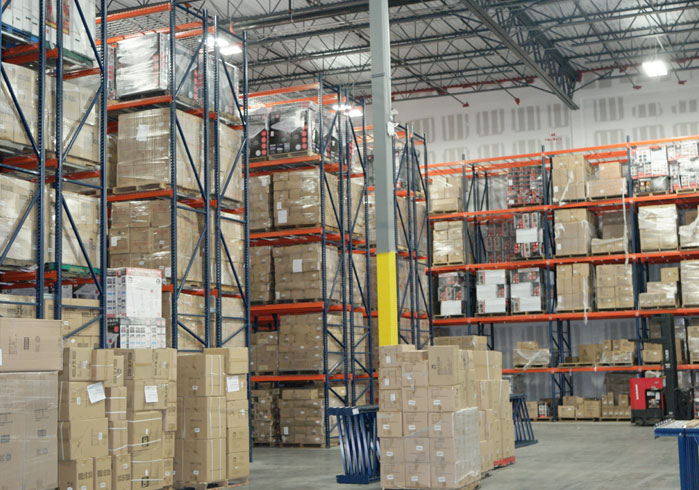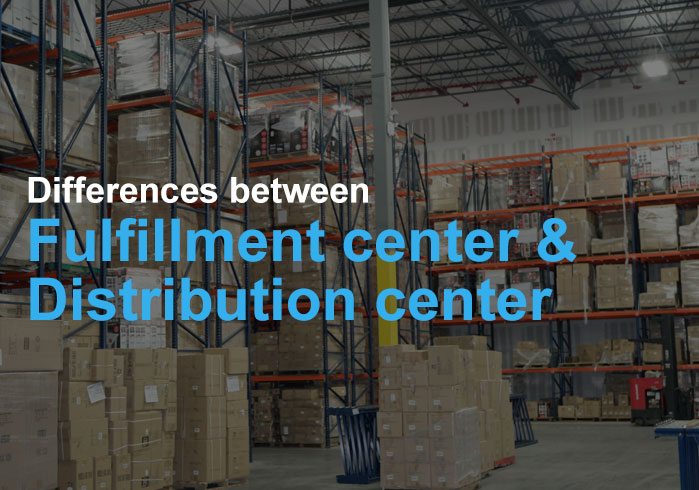
One of the key components of a distribution network for any business is its strategic use of order fulfillment facilities. This is particularly true if that organization is working within the e-commerce sector. Typically, there are two distinct facilities with specific operational procedures. The first is the fulfillment center and the second is the distribution center.
Successful organizations in the eCommerce world can streamline their supply chain through the correct selection of distribution and fulfillment centers depending on their operational needs. It is important to note that both aspects are part of the supply chain and should be given consideration during operations planning.
It is important to recognize the subtle differences between distribution and order fulfillment. A fulfillment center serves different purposes from a distribution center. This article explains the difference so that businesses can make the right choices.
What is a Fulfillment Center?
The fulfillment center ensures that orders are completed according to the supplier’s specifications. These are referred to as fulfillment services. In most instances, the products that are being sent to consumers will be shipped to the fulfillment center. They are most likely to be contained in pallets or a similarly secure container.
At this point, the warehouse receives them and stores the merchandise for a period of time before it is sold. It is critical to recognize that in this process; the fulfillment center becomes the final destination for the product because the supplier is now in effect the customer. The next stage involves the supplier making sales and then sending the appropriate products to the end customer.
Most businesses have an arrangement where orders trigger products to be transmitted via the sales channel until they reach the fulfillment center. An online dashboard may be used to track the progress of an order and appropriately update the customer about the progress that is being made. The fulfillment center is responsible for picking up the items based on the order.
The ordered items are then selected from the shelves within the fulfillment center and then shipped off to the respective customers. The center packs the products securely and affixes the appropriate labels (including the destination address and safety measures). It then notifies the carrier that a package is ready for delivery.
The carrier will pick up the package and then send it on to the customer directly. It is for this reason that many carriers have ongoing contracts with fulfillment centers which allow them to pick up merchandise for specific clients. In the USA, the common carriers include USPS, UPS, and FedEx. For purposes of a seamless supply, the pick-ups are done daily.
Certain additional and supportive services may be provided by the fulfillment center. Some of these include the customization of the order, making adjustments based on customer specifications, providing services that cover multi channel fulfillment, and also assisting with your inventory management processes. At this point, it is appropriate to recognize the fact that long-gone are the days when the fulfillment center was nothing more than a glorified warehouse.
To reflect their increased importance, sophistication, and relevance to the supply chain, fulfillment centers have acquired several alternative names including “order fulfillment center”, “fulfillment warehouse”, and “3rd-party logistics warehouse” (3PL). It is in this spirit that third-party logistics often incorporate the role of a fulfillment center. Recently, there have been attempts to add new levels of services for suppliers including 2PL, 4PL, and 5PL.
What is a distribution center?
The distribution center may also act as a warehouse of sorts. However, it appears at a different point in the supply chain when compared to the fulfillment center. The most basic definition of a distribution center is any waystation that allows for products to be redistributed. In some cases, the products can be warehoused in a distribution center.
One critical difference between a fulfillment and distribution center is that the latter does not directly ship to customers. Instead, it acts as a transit point for products to change the mode of trans-distribution. For example, freight may change to shipping or truck transport via the distribution center.
There have been cases where products are sent from a distribution center to a fulfillment center before being passed on to the customer. Large retailers tend to use distribution centers as merchandise hubs. Examples of this include grocery chains that rely on distribution centers to maintain appropriate levels of stock in their stores.
This is particularly important where customer demand means that products are bought very quickly on the shelves and need to be replenished so that there are no shortages. In this way, the supply chain for major supermarkets remains responsive and up to date. Perhaps the imaginative use of distribution centers has led to a misunderstanding of their role and subsequent failure to distinguish them from the fulfillment centers.
How to Choose Between a Distribution Center and Fulfillment Center
Businesses are sometimes faced with the dilemma of choosing between a fulfillment and distribution center. This is particularly true if they do not have the resources to run both elements of the supply chain. Generally speaking, e-Commerce fulfillment requires fulfillment centers as opposed to distribution centers.
This is based on the fact that e-commerce can have a very quick turnaround and does not want to have in-between delays in the supply chain. Moreover, several e-Commerce operatives may use the same fulfillment center to cut down their operational costs. Meanwhile, the fulfillment center benefits from economies of scale.
Having opted for fulfillment centers as a modality, you then have to do quality control checks to find the most appropriate. Think about the quality of service they deliver in terms of speed and reliability. You also need to consider the level of service you need. Others may take into consideration the size of your business and the types of products that you propose to sell.
Certain unique specifications may alter the way you commission a fulfillment center. For example, you may require subscription boxes or a sophisticated crowdfunding fulfillment. It is important to make a careful selection of the most appropriate fulfillment provider for your business. Otherwise, you will pay the price for delays and missed deliveries.
Wrapping up
Supply chains typically have both distribution and fulfillment centers. The distribution center is a transit hub for goods as they change the modality of transport. By contrast, the fulfillment center holds products before they are shipped off to customers. Most e-Commerce players require a fulfillment center as opposed to a distribution center. However, these businesses need to find an appropriate order fulfillment service provider that is fast, effective, reliable, and efficient.



3 Comments on “Differences Between Fulfillment Center and Distribution Center”
What is the employee head count difference between the distribution center vs the fulfillment center ?
Hi, the way explained about the distribution center vs fulfillment center was very nice. Thank you for the beautiful explanation regarding distribution center vs fulfillment center keep going on.
Hi, the way explained about the distribution center vs fulfillment center was very nice. Thank you for the beautiful explanation regarding distribution center vs fulfillment center keep going on. On our website we published the same blog regarding warehouse vs fulfillment.